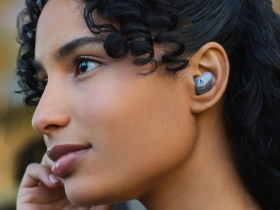
Contents

Google is investing in smart glasses now. But what’s the news here, as the company is known for its previous attempts at building this technology? The key difference is that before, Google failed, and many may not even know about Google Glass. This time, they’re coming back with a plan, which includes introducing Android XR as part of the project. We took a deep dive into the possibilities that Google’s initiative may pay off.
Why Decentralized Tech Makes Gaming Easier
One area where smart glasses could really stand out is gaming, especially augmented reality (AR) games that mix with your real surroundings. Unlike big VR headsets that block out the real world (like the well-known Apple Vision Pro), AR glasses are lighter and add digital images on top of what you’re already seeing.
Decentralized blockchain-based games may have a leg up in adapting to this shift. Players today enjoy the crypto versions of traditional casino games; some of them, like roulette and slots, are highly popular. But what makes us think that these games have the advantage when it comes to being integrated into the ecosystem of smart glasses?
Well, the same crypto roulette is a blockchain-powered spin on the casino classic. In crypto roulette, every spin is determined by a verifiable random number and recorded on the blockchain, with smart contracts automatically handling payouts. The game’s fairness and operations don’t rely on a central server – they’re baked into code. Analyses show that decentralized casinos offer perks like lightning-fast crypto payments, transparent odds (thanks to provably fair algorithms), and instant payouts.
Because these games run on open protocols rather than closed platforms, they can be accessed on all sorts of devices – including future AR glasses – with minimal fuss. There’s no lengthy install or gatekeeper; a user could launch a blockchain game in a browser-like interface on their glasses and start playing. By contrast, many traditional online games would need significant porting or app store approval to work on a new form factor. In short, crypto-based games look technically primed for wearable AR. A Google glasses user could seamlessly join a decentralized game and trust that the gameplay is fair and tamper-proof. This agility makes crypto games strong contenders to ride the smart glasses wave ahead of the pack.
Google’s Smart Glasses Strategy in 2025
Google’s second attempt at smart glasses is markedly different from its first. This time, the focus is on blending into everyday life. At I/O 2025, Google announced it will partner with Samsung, Gentle Monster, and Warby Parker to create smart glasses that people actually want to wear. It’s a clear response to the lessons of Google Glass, which faced privacy backlash and a geeky image. Now, style and subtlety are paramount. Early prototypes hide the camera in the frame and use a discreet in-lens display to avoid the conspicuous look that made folks uneasy.

Under the hood, Google is building on Android XR – an extended-reality version of Android – as the software core of these glasses. It has even expanded its Samsung partnership to jointly develop reference hardware for XR devices.
AI is the real star of Google’s new glasses. The company is integrating its upcoming Gemini AI to make the eyewear an “always present AI assistant” that can see and hear what you do. With built-in cameras, mics, and speakers, the glasses will let the AI interpret context and offer live help – say, translating a street sign or identifying a landmark. By leaning into Google’s strengths in AI, the glasses aim to be not just a second screen but an active personal helper.
The market conditions in 2025 are more favorable. Meta’s Ray-Ban smart glasses have sold over 1 million units, and Apple’s Vision Pro headset has renewed interest in AR wearables. Google can pitch its glasses as a sleeker, everyday alternative to those bulky goggles. By focusing on practical uses (navigation, messaging, photography) and teaming up on fashion, Google’s second swing at smart glasses is aligned with what today’s users are looking for.
How Google’s Ecosystem Paves the Way
Another reason Google’s smart glasses have a shot is the strength of Google’s existing ecosystem. Because the glasses run on Android, they can tap into a vast library of apps and services from day one, essentially taking many things we normally do on a smartphone (maps, messages, etc.) and putting them directly in our field of view.
Today, game streamers are very active on YouTube, which serves as a primary platform for many to share video gaming content. Even if you go through the list of the best Valorant streamers, it’s obvious that many of them have a huge number of followers on YouTube. That built-in community could translate into early adopters for Google’s glasses.
Beyond gaming, Google’s array of popular services forms a ready support system for a wearable. Google Maps can beam AR walking directions onto the sidewalk in front of you. Your music player can display song info. Google Assistant is on standby to answer questions or send a text via voice. And it’s all tied into your Google account, so your calendar, emails, and photos are accessible when you need them. In short, Google is introducing a new interface for an ecosystem people already live in. That could make the difference in turning smart glasses from a curiosity into a mainstream must-have.
What’s your reaction?
Love0
Sad0
Happy0
Sleepy0
Angry0
Dead0
Wink0











Leave a Reply
View Comments